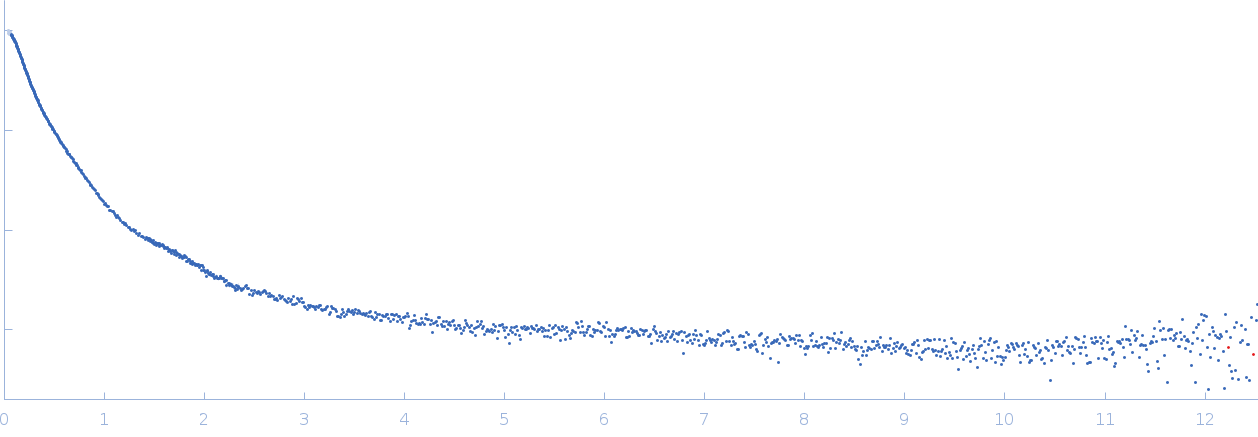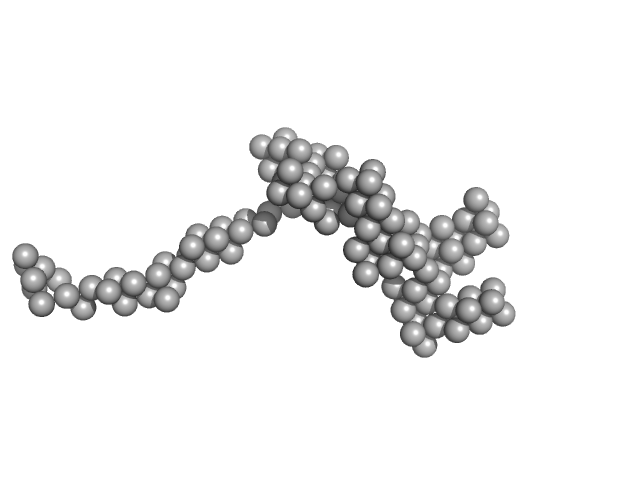| MWexperimental | 271 | kDa |
| MWexpected | 150 | kDa |
|
log I(s)
5.47×10-1
5.47×10-2
5.47×10-3
5.47×10-4
|
 s, nm-1
s, nm-1
|
|
|
|

|
|
Synchrotron SAXS
data from solutions of
Fc-fused PTPRA ECD in PBS buffer
in
10 mM phosphate, 137 mM NaCl, 2.7 mM KCl, pH 7.4
were collected
on the
13A beam line
at the Taiwan Photon Source, NSRRC storage ring
(Hsinchu, Taiwan)
using a Eiger X 9M detector
at a sample-detector distance of 9 m and
at a wavelength of λ = 0.08265 nm
(I(s) vs s, where s = 4πsinθ/λ, and 2θ is the scattering angle).
One solute concentration of 10.00 mg/ml was measured
at 15°C.
Three successive
2 second frames were collected.
The data were normalized to the intensity of the transmitted beam and radially averaged; the scattering of the solvent-blank was subtracted.
|
|
|||||||||||||||||||||